Cold Chain Logistics: Management Challenges & Solutions
The supply chain is a term used to describe all the components required to transport goods from beginning to end, from production to the end...
6 min read
 BUKU Marketing
:
May 3, 2023 1:00:00 PM
BUKU Marketing
:
May 3, 2023 1:00:00 PM
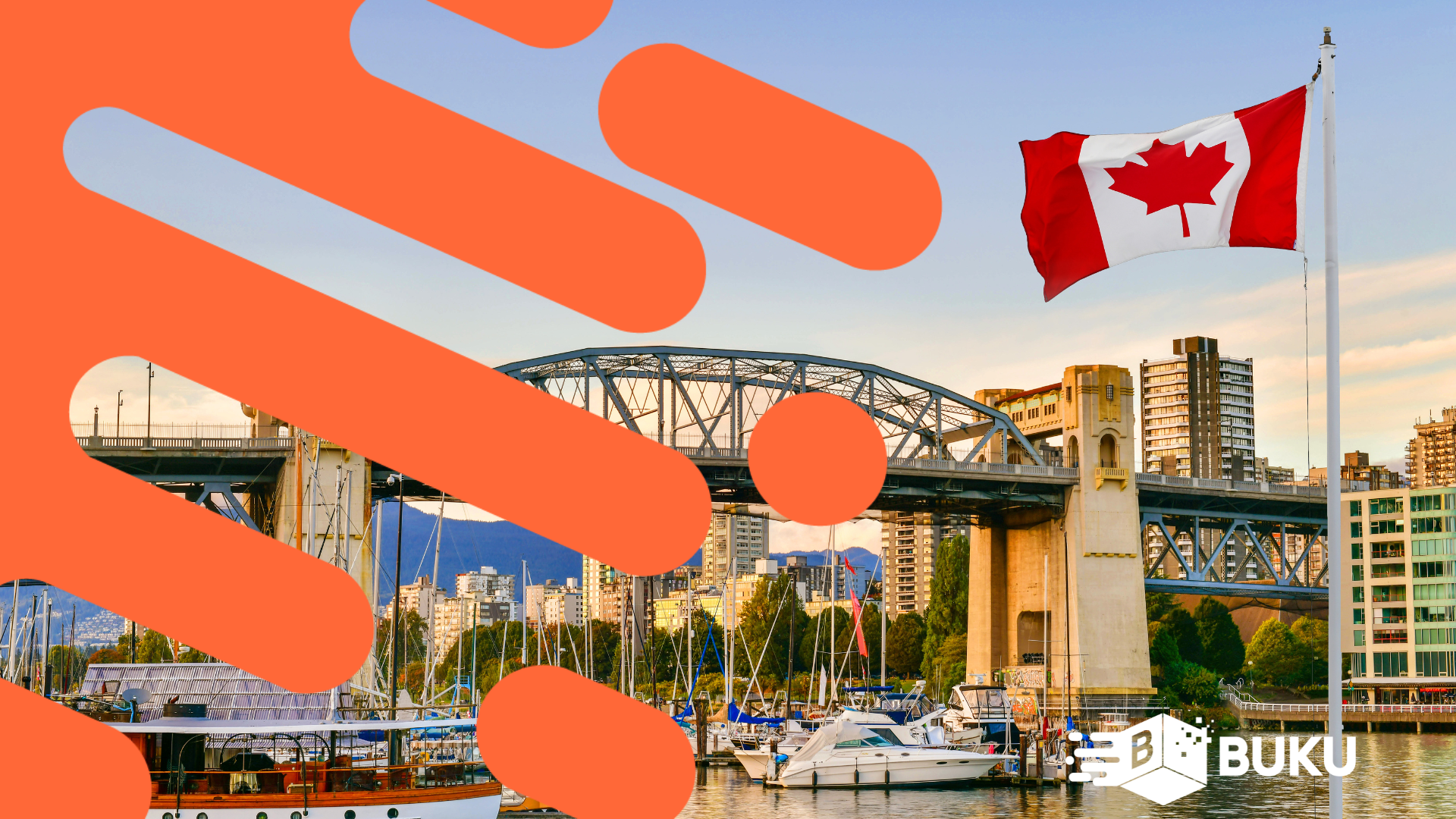
Over the last few years both Canada and the US have seen major ups and downs economically. Not only has this affected employment, savings, housing, and stock markets but it also has had an effect on eCommerce. These ups and downs make navigating these markets a constant learning process. But, every eCommerce brand that does its research and studies these markets will have an advantage over other brands.
In this article, we will discuss what it is like to ship within North America. We will dive into the Canadian and US eCommerce markets. And explain what the best tips and tricks are to ship in 2023 successfully.
Whether you're a brand in the US or in Canada, being able to ship easily within this continent is vital.
There are so many tools, carriers, and fulfillment centers that make the process simple for any brand wanting to be able to ship both in the US and Canada.
By expanding your reach, you'll gain access to millions of additional potential customers!
The State of E-commerce in North America | 2023
Over the last few years, eCommerce in North America has been growing exponentially. In eCommerce there are so many different types of commerce. Media, food, electronics, etc. Each are growing and selling at different rates. In 2023 it is predicted that we will do $1,115.30 billion in eCommerce in north America. We also expect to see a continual growth in eCommerce as time goes on. "Revenue is expected to show an annual growth rate of 11.56%, resulting in a projected market volume of US$1,727.00 billion by 2027." (Statista)
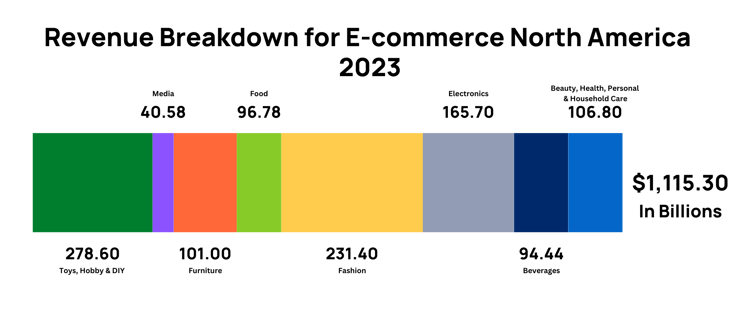
Shopify is a huge commerce platform that many brands use to market their products online. In Shopify's Commerce Trend Report for 2023 their director of product retail and messaging stated "Commerce is everywhere. The purchase journey is non-linear. It can happen from seeing an ad on Instagram, an influencer on TikTok, a drop on Twitter. You might be window shopping in person, or a friend might send you a link."
E-commerce is an essential part of commerce now days. And there are amazing mediums in North America to connect to customers.
Shipping in the US
Many eCommerce brands are based in the US. In regards to shipping here are some of the top things you'll need to know.
1. Shipping zones
Shipping zones are very important to understand. The US is divided into zones when dealing with shipping. USPS has divided the US into 9 different zones. 8 for continental USA and 1 for outlying territories. Many other carriers follow USPS's zones as well. These zones are different sizes and can determine how expensive a package will cost to ship. Zones also change in regards to where you are located. Below are a few examples of what the zones could look like depending on where you are shipping out of.
Los Angeles, California (Stamps.com)

Chicago, Illinois
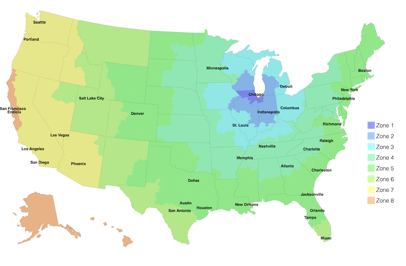
As you can see no matter where you are there are a certain amount of zones and the further you ship to the more zones you have to pass over. The further you ship the more it will cost you.
2. Carriers
In the US there are many carriers that compete for your shipping business. That's right, they compete for you. So be sure to look around to find the best rates for you. As you do this make sure you understand your business. Are you packages normally heavy, are you shipping internationally, where are your fulfillment centers and warehouses located. Carriers take all this information into consideration. If you understand your business you'll be able to better select a shipping carrier to meet all your needs.
Some of the biggest carriers are FedEx, USPS, UPS and DHL. They are great places to start when you're searching for rates. But, don't forget that there are other companies such as First Mile, Landmark global, Wizmo, ePost Global and much more!
Luckily working with carriers is a specialty with BUKU. We have incredible relationships with hundreds of carriers that fit your specific circumstances because we know no eCommerce brand is alike. Schedule a time with one of our shipping experts to get amazing rates for your fulfillment center or eCommerce brand. Click here
3. Fulfillment Centers/Warehouses
Throughout the US there are thousands of potential fulfillment and warehouses available to eCommerce brands. In our last blog "Choosing a fulfillment center vs warehouse" we discussed the differences and which one works best for your brand.
Location of fulfillment centers matter. Say you are located in LA and need to ship to Wyoming. If your fulfillment center was in Utah it would make that shipment cheaper, faster and easier for you. So the location of your fulfillment center is a very important decision to make. It can save you and your customer time and money.
As you grow using multiple fulfillment locations can be incredibly helpful. This can divide the US up into smaller sections. Instead of having to ship across the country you can now ship out of the closest fulfillment center to reach its destination.
Extra: Dimensional weight
Dimensional weight affects products not only in the US and North America but world wide. But it is often overlooked and misunderstood. Not accounting for dimensional weight can cause you to lose lots of money on shipping rates.
Most eCommerce brands understand that the heavier your product is, the more expensive it'll be to ship it. This is gravitational weight. Dimensional weight has to do with the space a package takes up. Even if the package is light, if it is relatively large it'll cost you more to ship. Shipping hats? They are light weight, but depending on the hat could take up lots of space with the box it's in. This will cost your business more unseen costs if not accounted for.
You cant get around paying dimensional weight but you can work on changing packaging and finding a carrier that is willing to give you the best rate for your products.
Shipping in Canada
Now on to Canada! Shipping into and within Canada can be extremely profitable. Canada has millions of potential customers that eCommerce brands can access. But what is it like shipping wise? You may wonder how can I best approach shipping within and into Canada?
1. Zones
We saw how zones affected the US. Canada also has various shipping zones that depending on where your shipping from, can raise or lower your rate. Canadian zones are broken up into 7 zones according to "Canada Post's Store". And it looks something like this:
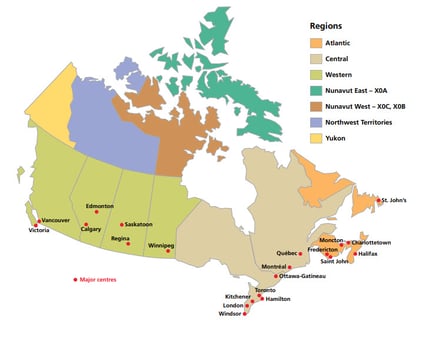 These zones are broken up geographically and by population due to the service and ability to get to certain regions. The further the products have to ship further the more it will cost the seller/consumer. So be aware of the zones and how many it will have to cross in order to reach its destination.
These zones are broken up geographically and by population due to the service and ability to get to certain regions. The further the products have to ship further the more it will cost the seller/consumer. So be aware of the zones and how many it will have to cross in order to reach its destination.
2. Carriers
There are plenty of carriers that ship within and to Canada. Wizmo is a great carrier to highlight. Wizmo is "Canada's fastest-growing & most innovative logistics company. Enterprise B2C Shipping management. Ecommerce excellence." Wizmo offers services such as:
Some of their stats include 15% less transit time, 10% guaranteed savings, 10 million + Shipments annually, and much more!
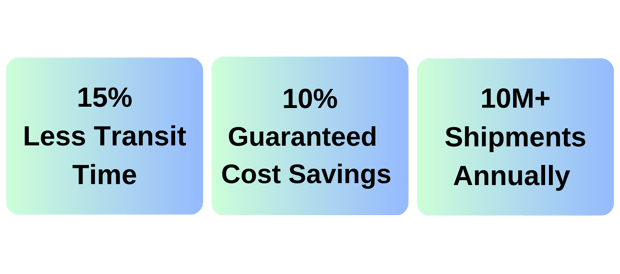
3. Duties and Taxes
When shipping into Canada from the US, you need to account for the taxes and duties that you have to pay. Canadian border service agency states:
"Any item mailed to Canada may be subject to the Goods and Services Tax (GST) and/or duty. Unless specifically exempted, you must pay the 5% GST on items you import into Canada by mail. The CBSA calculates any duties owing based on the value of the goods in Canadian funds. The duty rates vary according to the type of goods you are importing and the country from which they came or were made in. Depending on the goods or their value, some other taxes may apply, such as excise duty or excise tax on luxury items.You do not have to pay the GST on the following goods that are imported into Canada by mail:
The Government of Canada has entered into agreements with certain provinces to collect the HST at a rate of 13 percent. If you live in a participating province, you will have to pay the HST instead of the GST." (Government of Canada)
Tools for Success
BUKU offers various shipping software solutions to improve customer experience and increase savings. International shipping can be confusing. BUKU focuses on taking the stress and hassle of shipping from brands. So you can focus on doing what you love, growing your business.
Tax & Duty Calculator
With our software solution, you're able to calculate all taxes and duties in the checkout. This automatically calculates and displays the taxes and duties in the shopping cart. Once a purchase is made, your brand will have collected the correct amount.
This also allows your business to offer DDU and DDP options in the cart.
Wholesale Rates
With connections to hundreds of carriers, BUKU can offer incredibly competitive rates to fulfillment centers and brands. By working with BUKU you save yourself the hassle of searching through carriers to see which rates work for you and as a smaller brand can access better rates than you may be able to negotiate at your current volume.
Final thoughts
Shipping within North America can be extremely profitable for any eCommerce brand. Although shipping can be complicated, there are tips and tricks to get you through it. As well as companies like BUKU that offer state-of-the-art shipping and software solutions.

The supply chain is a term used to describe all the components required to transport goods from beginning to end, from production to the end...

A smart warehouse is a large building where raw materials and other consumer goods are stored using machines, computers, comprehensive software, and...

Direct-to-consumer (DTC) fulfillment is a strategy that helps brands sell and deliver their products directly to customers more efficiently while...